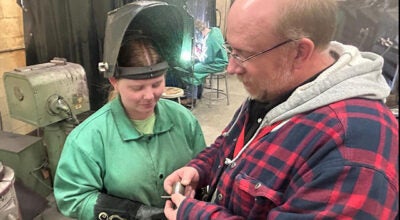Where are grads going after school?
Published 10:21 am Tuesday, October 22, 2013
The Albert Lea school board discussed Albert Lea High School graduates and their futures after high school at its Monday night meeting.
Secondary Programs Coordinator Jeff Halverson presented data about ACT scores and Advanced Placement classes and test scores to the board.
Halverson was tasked with finding out where graduates go after leaving ALHS, said Superintendent Mike Funk.
“A real concern has been rigor,” Funk said. “We do a lot of college in the schools. How does that translate to success in college?”
Halverson explained that there is more to be discussed relating to students who choose not to go into any schooling after high school, but his presentation would focus mostly on students who go to a two-year or four-year institution after high school. He showed data that said from 2008 to 2011, an average of 27 percent of students did not enroll into another school after graduating ALHS, 30 percent enrolled into a two-year school (and 78 percent of those chose Riverland Community College), and finally 43 percent enrolled into a four-year school.
“That surprises me,” Funk said.
Halverson explained that between 70 to 80 percent of students statewide choose to go onto more schooling after high school. Halverson also said in 2018, Minnesota will lead the nation for the percentage of jobs requiring some sort of schooling after high school.
“My goal is to increase career and college readiness,” Halverson said.
The ACT data that Halverson showed the board reflected that in the past eight years students have not met or exceeded state averages on any test by any high school class, except in two instances.
Halverson then showed the board that as of this school year, 422 students were in college in the schools courses, and 129 students were in Advanced Placement courses. Many AP courses overlap and are considered college level. And because students are receiving college credit, many do not take the AP test, so there was not much data reflecting student scores on AP exams.
The board then discussed what to do with the data and how it can be used to make sure all students are achieving more, no matter what their starting level is.
“This is a great starting point,” board member Jeshua Erickson said.
Funk explained that the data would next be presented to high school staff, and he also said that the data is not meant to pass judgment on any students or staff.
“This is the reality of our school system,” Funk said. “We need to get better at what we do.”
Funk said he has heard from parents of students who do well at ALHS only to go on to college and struggle through their first year.
“They’re just not as prepared as they thought they would be,” Funk said.
In other action the board:
• Heard from Mary Williams about her thoughts on the recently released Multiple Measurements Ratings. Williams explained to the board that the scores reflect student growth, and there is still work to be done at Southwest Middle School and Albert Lea High School. Williams also presented recent graduation rate data and said the district has intense work to do in regards to that. She mentioned that some subgroups broken out by the Minnesota Department of Education are especially struggling to graduate; one example is that only 55 percent of Hispanic students graduate from the district.
“The state is now wanting all those subgroups to reach 90 percent, and that’s not the case at our high school,” Williams said.
• Heard from Val Kvale of the Minnesota Workforce Center and Albert Lea High School Assistant Principal Johanna Thomas about how the district’s youth apprenticeship program is doing. The program was new in 2012-13, and Thomas said more students are involved this year. It is a partnership between the district and area businesses where students can learn about careers after high school through apprenticeships.
• Heard from Funk about the district’s research into having its own health clinic. Funk said he had heard from some citizens that they thought the district would be wasting money by opening a health clinic for its employees. Funk said he wanted to clarify that the district would only consider having its own health clinic if it were to save the district money.
• Heard from Director of Finance and Operations Lori Volz about bids for heating and ventilation upgrades at Southwest Middle School. The upgrades are part of the three-year project the district is doing to update those systems in the district’s older schools. The lowest bid for the Southwest project came in at just under $4 million and was won by The Joseph Company. Work is slated to begin soon and finish before the start of the 2014-15 school year.
• Approved a contract presented by Director of Human Resources and Technology Jim Quiram for the custodial bargaining unit. Quiram said the contract was updated with increases to salary and some changing of health benefits.



